When over 10 million people are without housing or on the brink of homelessness, while at the same time there are over 18 million vacant homes across the country, we must re-examine our nation’s priorities. When mortgage debts, increasing rents, and low wages put us all at risk of losing our housing, our response cannot be to make homelessness a crime. Instead we must recognize the great abundance in our society and guarantee everyone the right to a decent house to live in.
Disinvestment in public and subsidized housing, alongside stagnant wages, have created a massive housing crisis.
- The public housing stock was depleted by 463,368 units between 1996 and 2019.
- Since the 1970s, the number of federally subsidized housing units has declined by 10,000 per year.
- The affordable housing stock has declined by 60 percent since 2010.
- Over the past two decades, the percentage of renter households that spend at least half their income on housing has grown from 21 percent to 30 percent.
- In 2016 there was no state or county in the nation where someone earning the federal minimum wage of $7.25 an hour could afford a two-bedroom apartment at market rent — the national average wage needed is $22.10 an hour.
- In 2019, the homeownership rate for white householders was 73%, for American Indian or Alaskan Native 51%, Latinx 47.5%, and for Black householders 42%.
The most concentrated and visible expression of poverty in the US today is homelessness.
- On a single night in 2017, over 553,000 individuals were experiencing homelessness. Black people made up 41 percent of this population, white people 47 percent, and Latinx people 22 percent.
- 2.5 million and 3.5 million individuals make up the “sheltered” homeless population in the U.S. This includes those living in shelters, transitional housing centers, and “tent cities.”
- More than 7.4 million additional people are on the brink of homelessness, having lost their own homes and transitioned into the homes of others. From 2013-15, between 3.6 and 7.2 percent of American Indian and Alaska Native people in Tribal Areas were homeless and living with family or friends.
- Forty-four percent of people experiencing homelessness have a job, but are unable to afford shelter.
- The majority of homeless families are headed by single women with young children.
- In the 2017-2018 academic year, there were 1,508,265 homeless students enrolled in public school districts.
- LGBTQ+ youth represent between between 20 and 40 percent of the homeless youth population.
Rather than address the root causes of homelessness, cities and law enforcement have focused on criminalizing people who are homeless.
- A 2016 survey of 187 cities found that 34 percent ban camping in public, 57 percent ban camping in certain public places, 65 percent ban loitering in certain public places, and 53 percent ban sitting or lying down in public places, as well as other behaviors necessary for the homeless to survive on the streets.
- Nationally, homeless Americans are as much as 11 times more vulnerable to incarceration than the general population.
It does not need to be this way.
Instead of spending nearly $180 billion per year on mass incarceration, we could use those resources to build and maintain affordable housing for everyone. We could put the 18 million vacant homes to their intended use and end homelessness. The trillions of dollars being created and spent by the government and the Federal Reserve show that we have the resources to solve these problems and end this injustice.
In response to the coronavirus pandemic, the deepening recession, and the pressure put on state and local governments by organized poor and dispossessed people, some of these governments are finding ways to house the homeless and put temporary holds on evictions and foreclosures. While these steps don’t go nearly far enough, they are showing that it is possible to end housing insecurity. These measures must be expanded and made permanent, and they have to be accompanied by an end to the criminalization of homelessness and sweeps and evictions of tent cities.
Resources can and must be raised to secure adequate housing and health care for all, living wages, and decent jobs. Everybody has the right to live.
Read more from the Moral Agenda here: poorpeoplescampaign.org/demands
Read more from the Poor People’s Moral Budget here: poorpeoplescampaign.org/budget
Sources: Housing crisis: Without Housing: Decades of Federal Housing Cutbacks, Massive Homelessness, and Policy Failures – wraphome.org/wp-content/uploads/2008/09/WRAPWithoutHousingfederalcutbacks2007report.pdf; The State of the Nation’s housing – lccn.loc.gov/sn90022846; Rental Affordability Is Worsening – mf.freddiemac.com/docs/rental_affordability_worsening.pdf; Unaffordable America: Poverty, Housing and Eviction – irp.wisc.edu/publications/fastfocus/pdfs/FF22-2015.pdf; The Gap: A Shortage of Affordable Homes – nlihc.org/sites/default/files/Gap-Report_2017.pdf; Homeownership Rates by Race and Ethnicity of Householder – census.gov/housing/hvs/data/ann19ind.html; Homelessness: 2017 Annual Homeless Assessment Report to Congress – hudexchange.info/resources/documents/2017-ahar-part-1.pdf; Homelessness in America: Overview of Data and Causes – nlchp.org/wp-content/uploads/2018/10/Homeless_Stats_Fact_Sheet.pdf; Housing Needs of American Indians and Alaska Natives in Tribal Areas – huduser.gov/portal/sites/default/files/pdf/HNAIHousingNeeds.pdf; The Federal Job Guarantee – archive.intereconomics.eu/year/2018/3/the-federal-job-guarantee/; Lesbian, gay, bisexual and transgender youth: An epidemic of homelessness – thetaskforce.org/lgbt-youth-an-epidemic-of-homelessness/; Criminalization: No Safe Place: The Criminalization of Homelessness in U.S. Cities – nlchp.org/wp-content/uploads/2019/02/No_Safe_Place.pdf; Jail incarceration, homelessness, and mental health: a national study – ncbi.nlm.nih.gov/pubmed/18245159; It doesn’t have to be this way: Following the Money of Mass Incarceration – prisonpolicy.org/reports/money.html; Federal Data Summary School Years 2015-2016 Through 2017-2018, National Center for Homeless Education, , Jan 2020 – https://nche.ed.gov/wp-content/uploads/2020/01/Federal-Data-Summary-SY-15.16-to-17.18-Published-1.30.2020.pdf.
